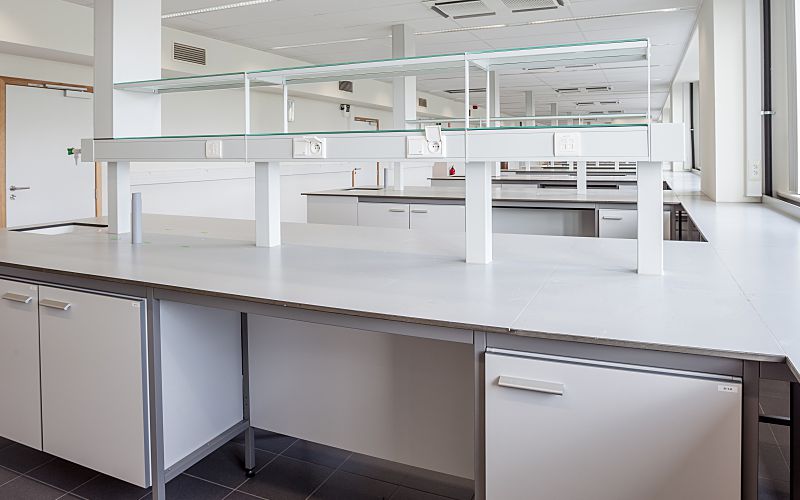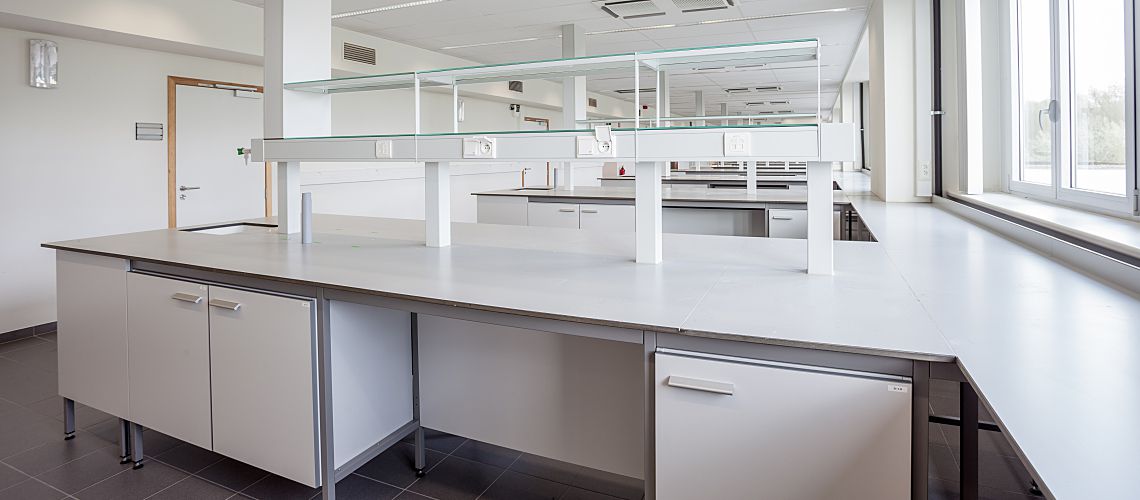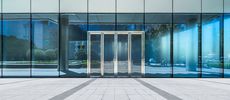5 Lab Design Changes to Help Protect Your Staff Now and in the Future


Lab design took on new significance during the pandemic. In early 2020, lab workers were among the first to test positive for the novel coronavirus, along with first responders and healthcare workers, according to a Canadian Broadcasting Corp. report. Going remote hasn't necessarily been an option for all water lab personnel, and many labs are busy supporting wastewater surveillance for SARS-CoV-2.
Even with vaccinations rolling out, new COVID-19 variants that may spread faster and more easily are now circulating globally. The risks for staff performing critical testing inside lab facilities remain high. Since the pandemic started, several shifts occurred in lab design that are likely here to stay.
FREE Best practices guide: Interpret your water testing results with confidence
"Many scientists predict other pandemics are likely in our lifetime, and life sciences companies will want to plan for it," architect Douglas White wrote in Lab Manager. Architects, occupational safety experts, and public health officials recommend implementing several long-term changes to help protect your team well into the future.
1. Reconfigure Spaces for Physical Distancing
Prior to the pandemic, many labs already had physical distance built into their designs through the use of six-foot-wide tables, as pointed out by architect Mark Paskanik in Laboratory Equipment. But, he added that new configurations may now be needed. To minimize proximity, he suggested converting aisles into one-way passages.
The Centers for Disease Control and Prevention (CDC) also recommended rethinking workspace layouts in an August 2020 update to Guidance for General Laboratory Safety Practices during the COVID-19 Pandemic. "To the extent possible, reconfigure workspaces and locations of shared equipment to reduce crowding. Create one-directional paths and workflows. Declutter workspaces and dispose of unnecessary items to help with reconfiguration," the agency advised.
2. Add Barriers for Protection
In workspaces where distancing measures aren't possible, CDC guidance proposes placing a barrier, such as plexiglass, plastic, or a partition, between individual work stations, desks, or equipment in order to keep staff separated.
Procedures that have a high likelihood of generating droplets or aerosols require special precautions. The Department of Labor's Occupational Safety and Health Administration (OSHA) calls performing aerosol-generating procedures, such as vortexing tubes on samples that may contain SARS-CoV-2, an example of laboratory work associated with the "very high" exposure risk level.
"To maximize worker protection, perform as much work as possible in a properly maintained and certified biosafety cabinet (BSC)," OSHA guidance says. "Class I BSCs use negative pressure and high-efficiency particulate arrestance filters to contain agents and protect workers and the environment. Class II and III BSCs provide higher levels of containment and filtration that also protect samples or other products in the BSC from contamination."
Additional lab design precautions that can provide a barrier between the specimen and personnel from the CDC's Interim Laboratory Biosafety Guidelines for Handling and Processing Specimens Associated with COVID-19 updated in September 2020 include "personal protective equipment (PPE) such as a surgical mask or face shield, or other physical barriers like a splash shield, centrifuge safety cups, and sealed centrifuge rotors to reduce the risk of exposure to laboratory personnel."
3. Strengthen Cleaning Measures
Straightforward changes inside the lab that emphasize the importance of hygiene could result in more frequent handwashing. "Use visual reminders, such as posters displayed throughout the laboratory environment, common areas, and restrooms," the CDC advised.
"Sanitizing remains the single most effective strategy to combat infection, both inside and outside of labs," White noted. "Lab equipment with a high frequency of handling and contact represents a higher probability of viral loading, so lab managers should identify such areas and ensure that they are disinfected on a routine basis."
Labs are increasingly borrowing enhanced cleaning protocols from the medical and hospitality industries, White observed. In an example highlighted by the California Water Environmental Association, the East Bay Municipal Utility evaluated and then procured mobile ultraviolet (UV) germicidal irradiation equipment. The utility uses this UV equipment along with manual cleaning inside their analytical laboratory, which analyzes a range of water samples.
4. Increase Outside Airflow
Scientists and public health experts have identified poor building ventilation as one of the main factors in COVID-19 outbreaks. For labs, an HVAC specialist told White that the upgraded air filtration and exhaust systems used in facilities handling infectious agents could become the norm. The specialist recommended that managers assess their facilities for ways to increase the flow of fresh outside air.
"For new lab facilities, the ideal situation would utilize control systems that require 100% outdoor air for labs and that save energy by recirculating air during nonoperational hours," White wrote. "Technology enhancements such as wireless equipment sensors can help monitor and manage indoor air quality in real time, while smart building systems can automatically adjust to improve building efficiency and reduce energy costs."
5. Assess the Lab's Biosafety Level
OSHA advises lab managers to ensure that their facilities meet the appropriate biosafety level (BSL) for work with SARS-CoV-2 based on the CDC's latest edition of Biosafety in Microbiological and Biomedical Laboratories. Increasing the BSL involves measures including specially designed air handling systems, more PPE, and stricter controls, OSHA added.
The CDC guidance specifically for labs that perform virus concentration procedures such as wastewater surveillance testing says, "Procedures that concentrate viruses, such as precipitation or membrane filtration, can be performed in a BSL-2 laboratory with unidirectional airflow and BSL-3 precautions, including respiratory protection and a designated area for donning and doffing PPE."
A pandemic more than 100 years ago ushered in architectural changes still seen in labs today, including overhead lighting and bright surfaces to facilitate cleaning. Now, in the face of COVID-19, lab managers have the opportunity to improve safety with smart designs that protect their teams in the near future and for years to come.







